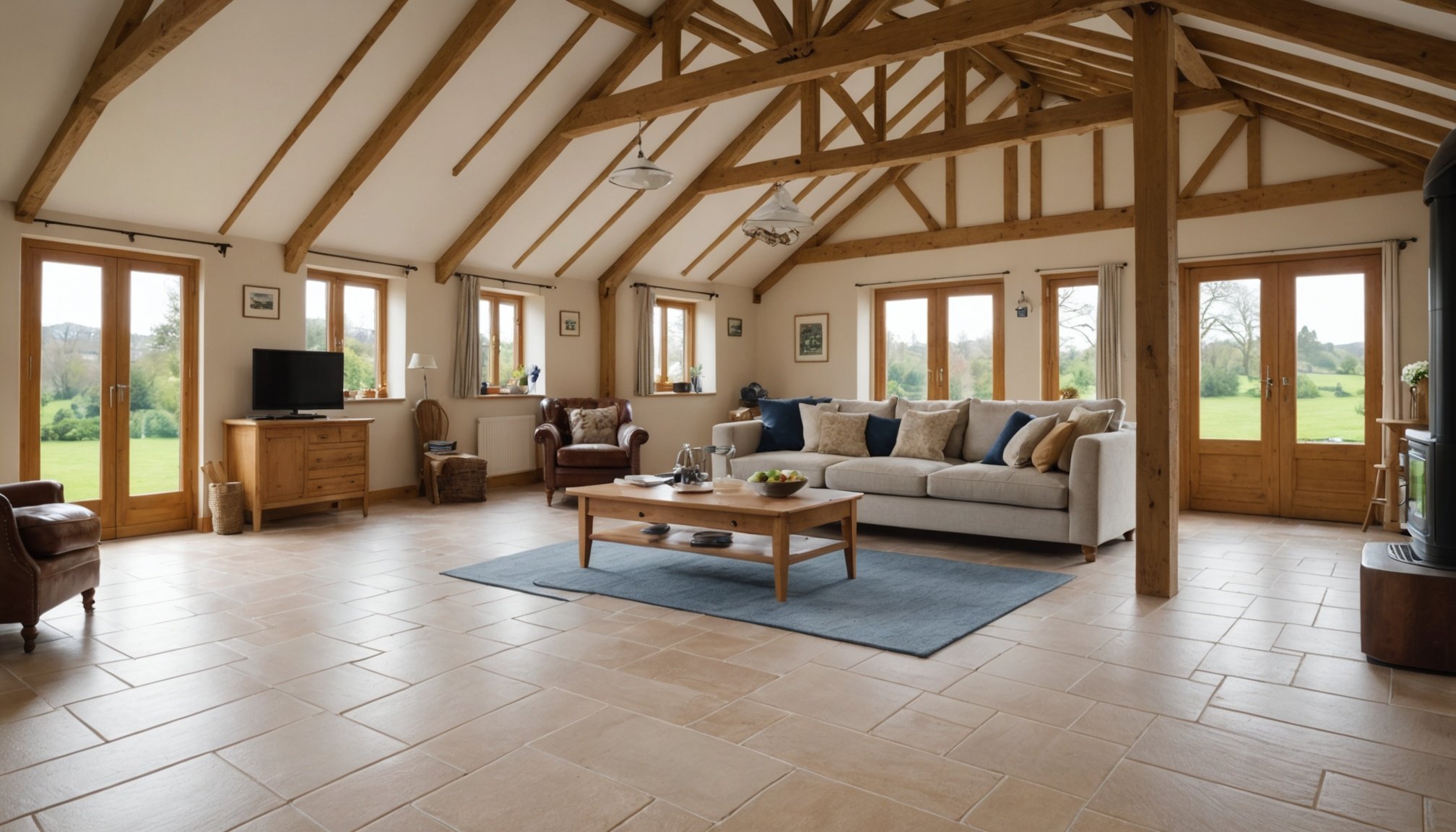Selecting the best underfloor heating system for your UK cottage can be a daunting task with the myriad of options available. However, armed with the right information, you can make a decision that will ensure your cottage is cozy all year round – without having to break the bank. This guide is here to help you navigate aspects like cost, energy efficiency, installation, and maintenance of different underfloor heating systems.
Understanding Underfloor Heating Systems
Before diving into the details, let’s first understand what underfloor heating (UFH) is and how it works. Underfloor heating is a type of central heating that achieves indoor climate control for thermal comfort. Instead of relying on radiators or a boiler, it uses the entire floor to distribute heat.
Also to see : Door-to-door dry cleaning: convenience at your doorstep
There are two types of underfloor heating systems: electric (dry) and water-based (wet) systems. The electric system uses electric wires to generate heat while the water-based system involves running hot water through pipes embedded within the floor. Both have their pros and cons, which we’ll delve into shortly.
Electric Underfloor Heating Systems
Electric underfloor heating systems are popular due to their relatively simple installation process. They are especially suitable for small rooms, such as bathrooms, since the cost per square meter can be higher compared to water-based systems. These systems are also easier to implement in existing builds because they don’t add much height to the floor.
Also to read : Transform your home with modern glass balustrade systems
However, electric systems are less energy-efficient than water-based systems, which can result in higher operational costs. They can also provide uneven heat distribution if not properly installed, making some areas warmer than others. Electric systems also tend to get hotter, which might not be suitable for rooms with temperature-sensitive items.
Water-Based Underfloor Heating Systems
Water-based systems are more complex to install than electric systems. They involve running a network of pipes, connected to a boiler, that circulates warm water throughout the floor. This type of underfloor heating is often incorporated into the building process of a house due to its complex installation.
Despite the higher installation cost, water-based systems are more energy-efficient, thereby providing the potential for lower energy bills in the long run. They also provide a more consistent level of heat across the entire floor and are less likely to overheat compared to electric systems.
Factors to Consider When Choosing an Underfloor Heating System
When choosing between an electric and water-based underfloor heating system, there are a few key factors to consider. Firstly, consider the size of the room. Electric systems tend to be more cost-efficient for smaller rooms, while water-based systems are better for larger areas.
Next, consider the insulation of your house. Underfloor heating works best in a well-insulated house, as it prevents heat from escaping. If your house isn’t well-insulated, you might want to consider improving that before installing underfloor heating.
Lastly, think about the type of flooring you have. Some types of flooring, such as stone and tile, conduct heat better than others. As such, the type of flooring you have may influence the type of underfloor heating system that will work best in your house.
How to Implement Underfloor Heating in Your UK Cottage
Implementing underfloor heating in your UK cottage is a process that requires careful planning and consideration. You’ll need to consider factors such as the size and insulation of your house, as well as the type of flooring you have.
If you’re building a new house, it’s best to incorporate the underfloor heating system into the build. This will allow for the most efficient installation and optimal performance of the system.
For an existing house, an electric system is usually the easiest to install. However, if you’re planning a large renovation, consider a water-based system for its energy efficiency and even heat distribution.
While it might seem complicated at first, selecting the best underfloor heating system for your UK cottage is manageable with the right information. Remember, the ultimate goal is to ensure you and your loved ones can enjoy a warm and comfortable home, regardless of the outside weather.
Choosing between Heat Pumps and Boilers
When evaluating different underfloor heating systems for your UK cottage, it’s vital to consider the heat source. The two primary options include boilers and heat pumps.
A boiler heats water to a high temperature and circulates it through the underfloor pipes in a water-based system. It’s a proven, time-tested approach to heating homes. Boilers have the advantage of working well with high-temperature systems such as radiators and are often existing infrastructure in older homes. However, they run on fossil fuels, making them less energy efficient and potentially more costly to operate.
On the other hand, heat pumps, including ground source and air source heat pumps, extract heat from the surrounding air or ground and use it to warm the water for the underfloor heating system. These pumps run on electricity but are exceptionally energy efficient. They work best with low-temperature systems, like underfloor heating, and are an excellent choice for new builds or significant renovations.
Ground source heat pumps extract heat from the ground, requiring extensive excavation that may not be suitable for all properties. However, ground temperature is more stable throughout the year, making it a reliable and efficient heat source.
Air source heat pumps extract heat from the outside air, requiring only an outdoor unit and less invasive installation. However, their efficiency can vary with outdoor temperatures.
When choosing, consider your home’s existing infrastructure, your renovation plans, the property’s suitability for a ground source pump, and your commitment to energy efficiency.
Considering Underfloor Heating Mats
Another aspect to consider in your underfloor heating system selection is heating mats. These are a form of electric underfloor heating that comes in pre-arranged mats, which can be rolled out for easy installation.
Heating mats can be a good option for smaller areas or irregularly shaped rooms, as they can be cut to size (avoiding the wire) and positioned to fit. They are also thin, which means minimal impact on floor levels. You can install them directly under most types of floor finishes, including tile and stone, which conduct heat particularly well.
Remember that like other electric heating systems, heating mats can be more expensive to run than water-based systems, though this can be offset by lower installation costs and the ability to heat rooms independently. However, they are efficient in heating up quickly, making them ideal for rooms that are not constantly in use.
Conclusion
Selecting the best underfloor heating system for your UK cottage involves considering many factors – from the size and insulation of your house, the type of flooring, the heat source, and the cost and complexity of installation. You might find that a combination of systems works best, perhaps using a water underfloor system run by a heat pump for the main living areas, and electric heating mats for smaller or less frequently used rooms.
Remember that your choice of underfloor heating can impact not only your comfort but also your energy bills and your home’s environmental footprint. Therefore, the selection process should not be rushed. Take the time to understand your options, consult professionals, and make an informed decision that ensures you can enjoy a warm and comfortable home throughout the year.
With the right underfloor heating system in place, your cottage will be a cozy haven even during those chilly UK winters.













